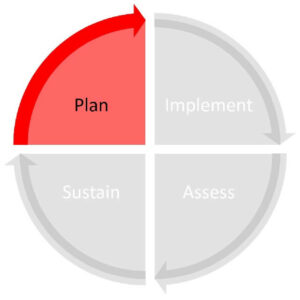Contents
- 1 How Effective Wellness Programs do Wellness Incentive Management?
- 2 The Benefits of Wellness Incentive Management
- 3 Wellness Programs And Wellness Incentive Management
- 3.1 They Pick The Right Incentives
- 3.2 The Wellness Committee Decides Incentives Status
- 3.3 Helps Company Decides How To Administer Rewards
- 3.4 The Wellness Committee Assigns Values To Each Item
- 3.5 The Wellness Committee verifies Items
- 3.6 Make Employees View/Update Points Easily
- 3.7 Fixes A deadline For Incentives
- 4 Things Employers Cannot do
- 5 Why Your Company Should Offer a Wellness Program?
- 6 Tips For A Good And Sustainable Program
- 7 A Word From Mantra care
How Effective Wellness Programs do Wellness Incentive Management?

The wellness incentive management service is the way to provide employees with an incentive for good behavior. It is scientifically proven to work. But there are other benefits as well. A 2014 study found that employee incentive programs are effective. Their review of 63 studies concluded that worker’s participation in these programs is associated with lower levels of stress, smoking, overweight and depressive symptoms. They also point out that the expansion of work hours does not seem to balance for this reduction of symptoms. They also note that there are particular health benefits for people who become more physically active.
Another study found that employees with at least one chronic condition who participated in wellness programs lost fewer workdays than those who did not participate. But they also note that their analysis revealed no significant differences among wellness programs all were equally beneficial to the worker.
Employees typically enjoy working for companies that offer incentives, not only because the program benefits them personally but also because it shows their dedication to improving themselves and bettering their company. This can lead to higher corporate morale, which often leads to greater productivity. Also, the amenities and equipment that such a program may provide to employees can help them increase their overall health and wellness, which not only increases their productivity but also reduces the company’s healthcare costs. Many people are not aware of the power that positive thinking has on an individual’s health. Positive thoughts have been shown to cause chemical reactions in the brain that help manage stress at work, control depression, and even treat chronic pain. Positive thoughts also release endorphins which make us feel good and help with our immune system. These benefits can lead to a longer life span for individuals who practice positivity.
The Benefits of Wellness Incentive Management

Wellness Incentive Management by wellness programs is effective. According to studies, wellness incentive management programs such as those offered by Fitbit or Weight Watchers can lead to weight loss and lower obesity levels. This is not only the case for adults, but also for children. A recent study found that overweight children who used a fitness tracker and participated in a behavioral intervention program lost 3 times more weight than those who did not participate.
Wellness incentive management programs are effective, but how? A recent study conducted by researchers at various universities provides some clues. The results of this study, which looked at the effectiveness of wellness incentive management programs for both organizations and individuals, mainly found that these programs can provide a positive impact on weight loss and obesity levels in most cases. However, further research is needed to determine the exact reason why these programs are so effective.
The study looked at information from workplace wellness incentive management programs provided by 60 companies. They found that employees with access to these programs lost an average of 4.5 pounds more than those who did not have access over a two-year period. More importantly, the employees who used these programs lost an average of 7 pounds more than those who did not use them over a two-year period. The study also looked at information from self-directed wellness incentive management programs. To see if working with professionals made any difference in results. And found that people who were free to choose their own program and method of working with health coach consultants lost more weight than those who were assigned to specific wellness incentives by their employers.
Wellness Programs And Wellness Incentive Management

In recent research, it was revealed that many people are not so keen on undertaking health-promoting activities. In any other case, this would have been a major problem. But the researcher took a different turn by focusing on how wellness programs do wellness incentives to encourage healthy living. The study was based on the assumption that initially, the participants had “a predisposition towards unhealthy lifestyles.” This did not bode well for the average person, but fortunately, there were positive results for those who did want to live a healthier life.
Wellness programs are effective because they target the right group; the employees who are concerned with their health. This is why wellness incentives can prove to be helpful. Even for those who were not conscious about their health, “the opportunity to receive a financial reward for engaging in activities related to wellness made them more likely to do it.” However, apart from providing incentives, “it is also important for companies to focus on the ‘why,’ not just the ‘what’ and ‘how.'”
For example, employees are more likely to be motivated by personal wellness goals they have set. They are more engaged when they find it meaningful to take care of their health. The best wellness programs offer employees an opportunity “to improve both physical and mental well-being.”
On the other hand, there are skeptics who believe that “people will participate in any program as long as there are monetary incentives”. But this belief is not completely true because employees were more likely to participate when they find the program or incentives meaningful. For example, some might enjoy exercising during lunch breaks but that doesn’t mean everybody else does.
They Pick The Right Incentives

This means that they don’t just offer incentives. They also try to understand why people might be inclined to participate in a wellness program. For example, employees are more likely to participate in company-sponsored lunch exercises and healthy food sales were up by 25%. They pick the right incentives for the right people.
The Wellness Committee Decides Incentives Status
One way that employers can decide what to incentivize is by consulting the worksite wellness committee. The wellness committee decides which behaviors, activities, or health status to incentivize and who should receive the incentive.
Another way that employers can decide what to incentivize is by looking for gaps in their current offerings. For example, if an employer does not have a wellness incentive for quitting smoking they may consider offering one as a form of insurance against increased health care costs. Or if they do not offer professional development programs as part of their wellness program. They may want to offer them as incentives.
Helps Company Decides How To Administer Rewards
 Once the employer has determined the behavior, activity, or health status they would like to incent and identified employees who will receive the incentive they must decide how to administer the reward. The most common way employers administer rewards is via a lottery or raffle. Other popular ways are with gift cards, cash, or charitable donations where employees are given an option to donate their rewards to charity if they choose.
Once the employer has determined the behavior, activity, or health status they would like to incent and identified employees who will receive the incentive they must decide how to administer the reward. The most common way employers administer rewards is via a lottery or raffle. Other popular ways are with gift cards, cash, or charitable donations where employees are given an option to donate their rewards to charity if they choose.
The Wellness Committee Assigns Values To Each Item
The wellness committee assigns values to each item. This way, employees can get rewards for achieving different goals. For example, if the organization wants to incentivize quitting smoking. They can assign a high value to that one goal while assigning lower value rewards for other behaviors like exercise or healthy eating. Employees then know that they will receive higher incentives (such as cash or gift cards) when they achieve the more difficult tasks.
The Wellness Committee verifies Items
The wellness committee determines which items can and cannot be verified. For example, if fitness trackers are being used to measure activity levels, the committee should decide to reward employees with either cash or gift cards for achieving their goals. If other methods are being used to measure activity levels, such as questionnaires, the wellness committee would not need to assign values to these items because they are already being measured.
It is also important for companies to focus on the “why,” not just the “what” and “how. For example, employees are more likely to be motivated by personal wellness goals they have set. They are more engaged when they find it meaningful to take care of their health. The best wellness programs offer employees an opportunity “to improve both physical and mental well-being.” This means that many employers try to make the process easy for their employees. For instance, employers don’t ask that people fill out lengthy forms or provide detailed information about their health status. They may offer incentives in return for providing only limited information about themselves, such as answering two questions about themselves.
Make Employees View/Update Points Easily
In addition, employers should make the process as easy as possible for those who collect and store data. This means that they need to make it as easy as possible for employees to access their accounts and reward points. They also need to make it as easy as possible for employees to update their points.
Fixes A deadline For Incentives
 For instance, employers may want employees to complete their wellness activities by a certain date. If this is the case, they need to send out reminders for each activity that is set to expire during that time period. Employers can do this with automated messages or posts on the company’s internal blog. It is also important for employers to set up mechanisms that can remind them when rewards are due or expire.
For instance, employers may want employees to complete their wellness activities by a certain date. If this is the case, they need to send out reminders for each activity that is set to expire during that time period. Employers can do this with automated messages or posts on the company’s internal blog. It is also important for employers to set up mechanisms that can remind them when rewards are due or expire.
Employers should consider the timing of their incentives, too. For instance, if there’s a certain date by which employees are expected to complete workplace wellbeing activities. Employers should send automated messages reminding them of the approaching date or post on the company’s internal blog announcing the upcoming deadline. The onus is on employers to set up reminders of rewards that are due or expire on specific dates, too.
Things Employers Cannot do
Employers cannot require employees to participate in wellness programs, either fully or partially. They also cannot discriminate against workers on the basis of their health status if they refuse to participate in the program. Employees should not have to pay more for their benefits if they refuse to participate in wellness programs either. However, employers are free to charge smokers up to 50 percent more for health insurance premiums.
Employers can not force employees to monitor their own weight or blood pressure.
Why Your Company Should Offer a Wellness Program?

A company can offer a wellness program for many reasons. The most common reason is to improve the employees’ health. Other reasons for having a wellness program might be to have an incentive for better behavior or to promote weight loss. Whatever the reason, it is important that the program is something that the employees find interesting. Healthier companies are more successful and engaged with their employees.
Wellness programs don’t have to be expensive. There are many programs employers can choose from, that are affordable and easy to do. Some include walking meetings, fitness classes, healthy food options in dining areas, bike riding on Fridays, and more.
According to healthcare experts “It may be time for employers and their partners to reevaluate the way they design and motivate employees to participate in wellness programs.” This makes a lot of sense. Because the researchers found that about 60 percent of Americans have an unhealthy lifestyle which could affect their health.
Tips For A Good And Sustainable Program
Tips on Making sure your program is Affordable and Sustainable for Your Business and Employees
The costs for wellness programs are very expensive, which can make it hard to know. If the program is affordable and sustainable. There are many ways you can make sure your program is both affordable and sustainable. Here are some tips:
Identify Any Hidden Costs
Hidden costs often show up in the form of unforeseen utility bills or insurance rates, which can be difficult to predict when budgeting for wellness incentives.
Keep in mind that there’s no one size fits all approach when it comes to designing a wellness incentive program. Different businesses may have different needs when it comes to affordability and sustainability. For example, it may be more feasible for a business that has more employees than cash expenditures each month to utilize discounts on services instead of direct cash incentives.
Create A Perfect Reward System for your Company
A wellness program should align with any goals established by your company or organization for things such as lowering health care costs, increasing customer satisfaction and retention, reducing absenteeism, and improving productivity.
Yoga is pretty popular nowadays, but it’s also costly because you have to pay the instructor. If you’re not familiar with yoga lingo. Iyengar is a type of Yoga that focuses on proper alignment in poses to prevent injury. Public classes are often held by instructors who follow this doctrine or by instructors who believe yoga can guide you into gaining mental clarity through meditation.
Think About How To Sustain The Program Over Time

Figure out if certain employees need to participate in workshops. Or is there any minimum number of staff that must take part in the program? Businesses should consider these questions. And figure out ways to make their wellness incentive programs work for them and be affordable over time.
Try thinking of ways you can bring in revenue from other areas in your business to fund your wellness incentive program. For example, you could sell excess products or services that are no longer of use. Either through a consignment store or hold a garage sale sponsored by your company. You could also add training programs and take advantage of the tax incentives available in these programs. For example, you could take your employees to a conference that will teach them new skills. That they can then take back to the workplace.
Partners With Other Local businesses Owners
Consider partnering with local business owners when creating your wellness incentive program. We all have areas in which we are experts and by pooling resources together. You can offer a program that is affordable and sustainable for everyone involved.
Hold company events, exhibitions, or shows to promote your wellness incentive programs to existing and future employees. You can do this by holding a seminar at the workplace or sponsoring a booth at a local event. That will allow you to share information about your programs with people from surrounding communities.
A Word From Mantra care
Do you want to keep your employees happy, healthy, and productive? Join our employee assistance program and get a healthier workplace.


